Mountains and Life
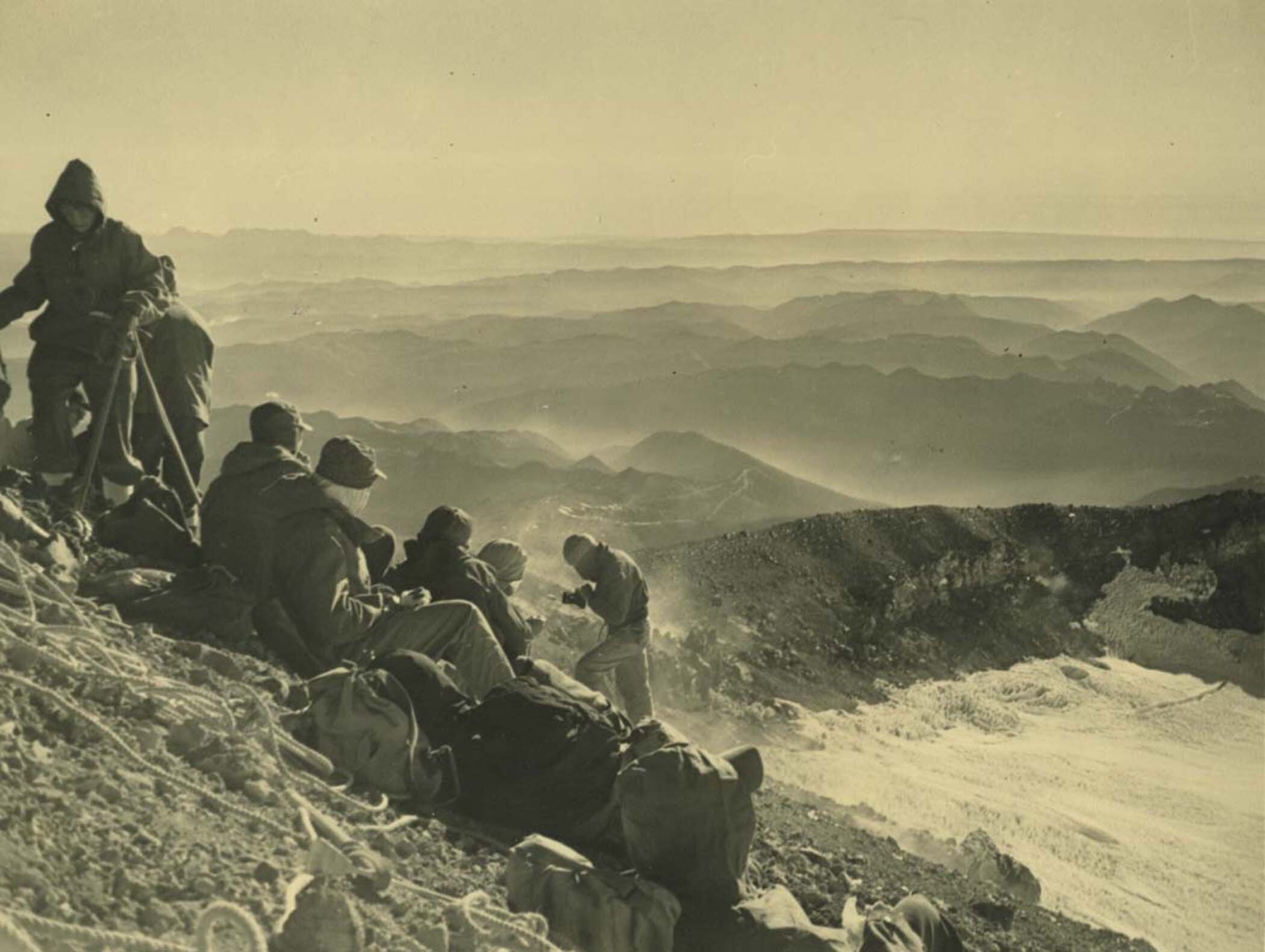
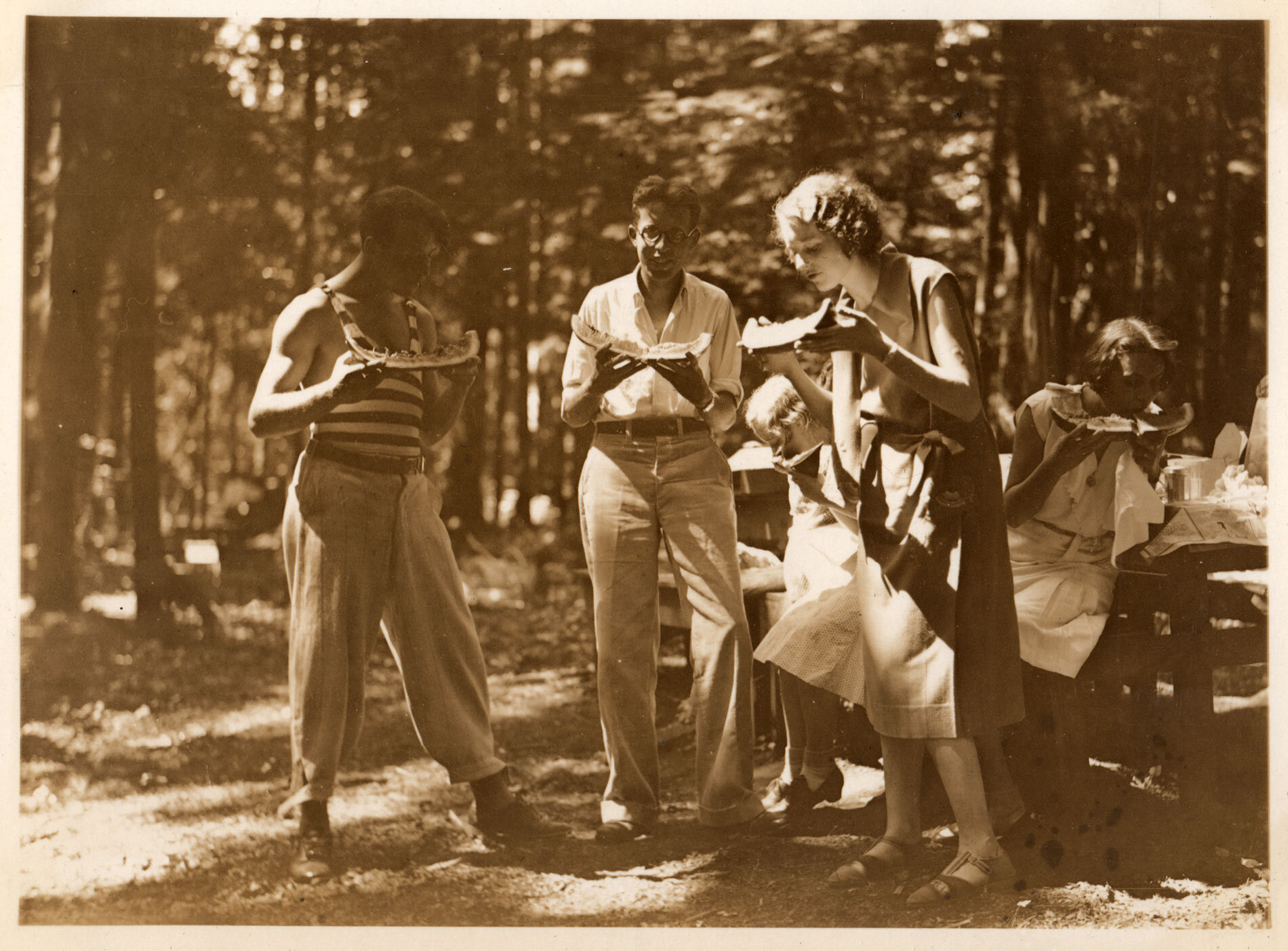
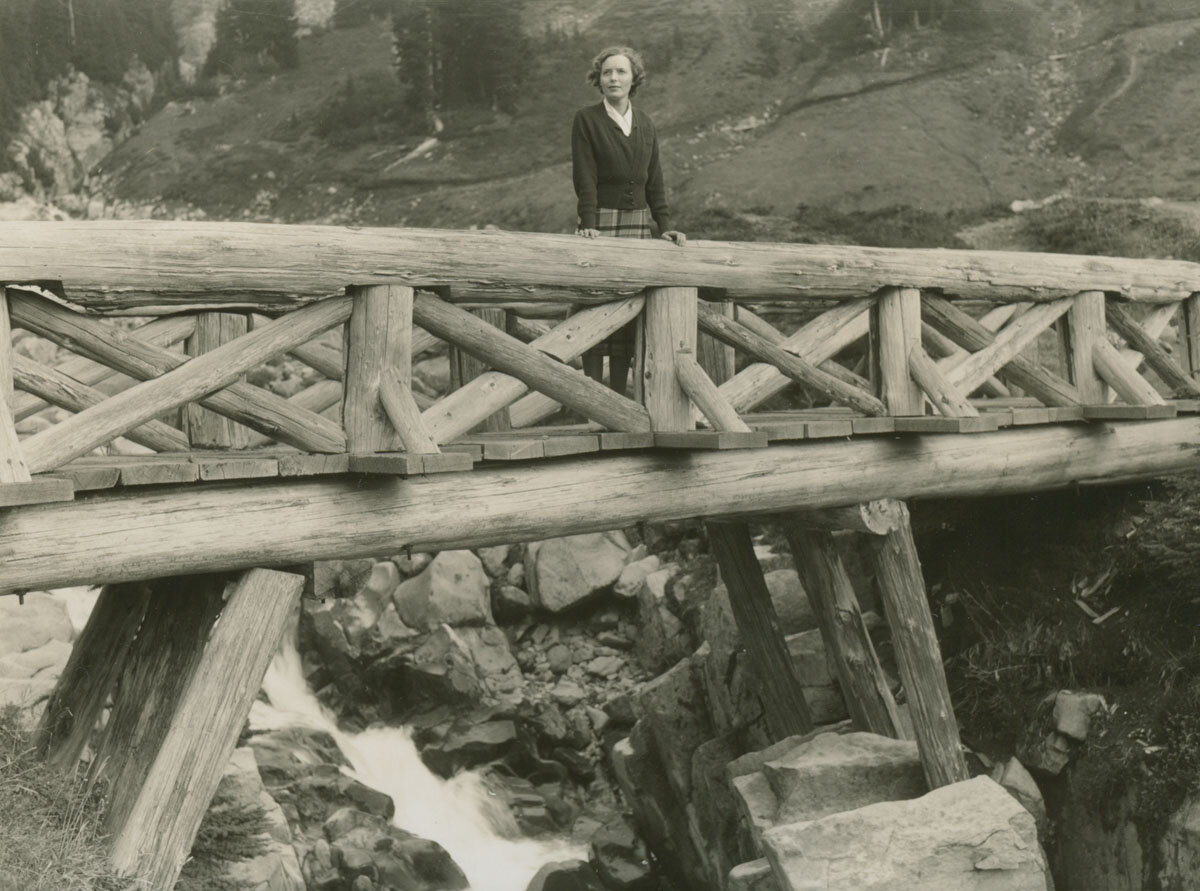

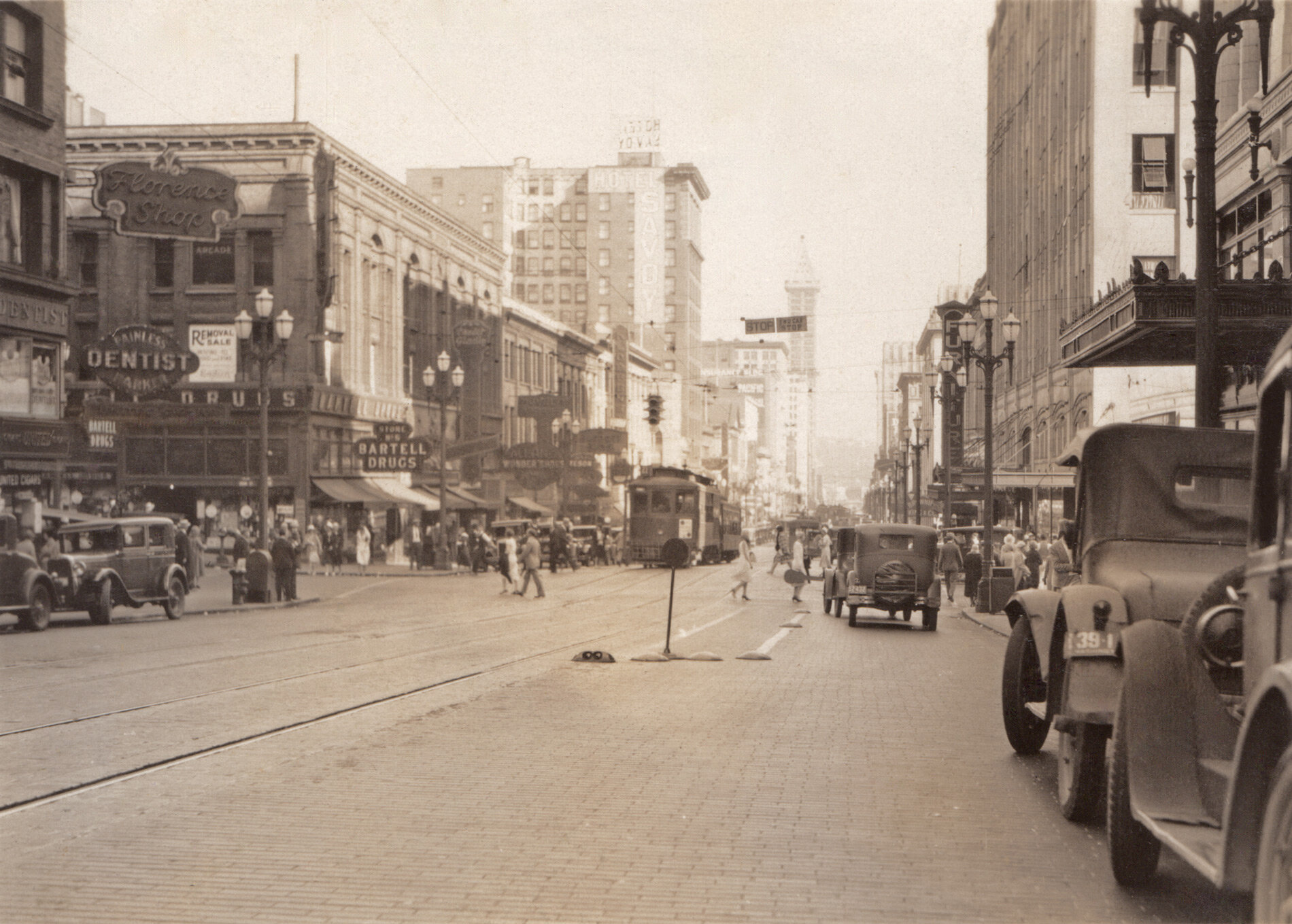
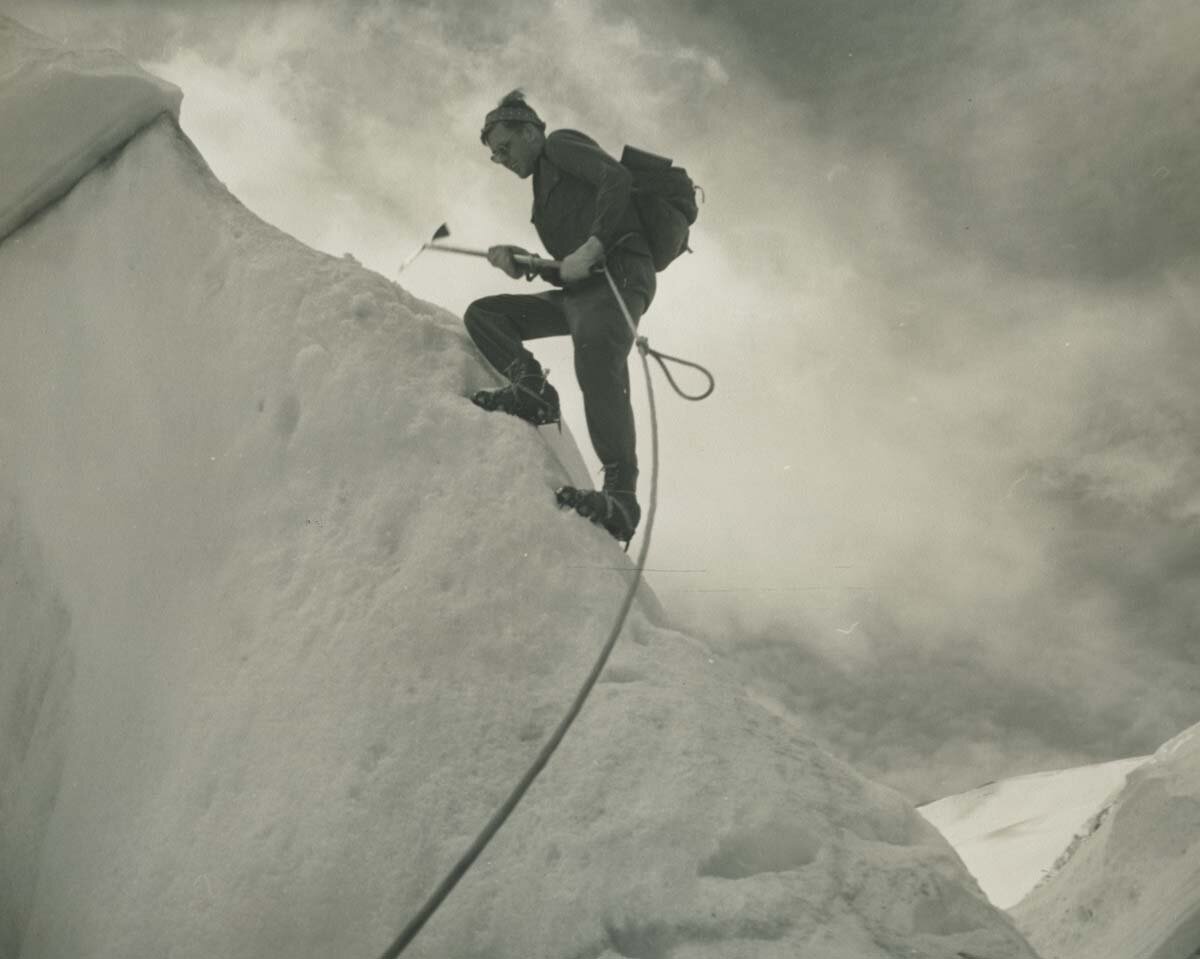
Vintage Collection of Pacific Northwest History

Mountains and Life







Mary Elsie Pearson near Mill Creek, Snohomish County, WA. Photo by E.H. Pearson
Mentioned in the previous post, Mary E. Pearson was active in Seattle's burgeoning ecological conservation culture. Prior to serving as First Vice Chairman of The Arboretum Foundation in 1958, Mrs. Pearson independently studied Pacific Northwest flora both on the rugged slopes of the Cascade Mountains and in the arboretums and parks of Seattle. Botany and landscape design become her highest passion. The following documents were scanned from a large binder of notes recently found in the Pearson Collection. For an avid botanist or gardener living in temperate Pacific coastal climates, this information would be of high value.
B: June 24, 1908 Roswell, New Mexico // D: April 4, 1998 Seattle, Washington
Mary Pearson, pictured here sitting in [their] classic adventure car, fully packed with camp gear against a backdrop of North Cascades wilderness. An area of which Mary Pearson had a large part in helping designate as today's North Cascades National Park. The image was shot by her newlywed husband, Hal Pearson (E.H.P.) in 1932. There are hundreds of photos to share from their times spent in the Pacific Northwest. Climbing, picnicking and celebrating the outdoors were not just weekend getaways.
Mary spent a lifetime shaping conservation efforts in Seattle's Puget Sound. Working closely with friend and neighbor Emily Haig (former president of Seattle Audubon Society), as well as establishing and maintaining the Washington Park Arboretum in Montlake residential district in Seattle, WA. Other affiliations include active memberships of the Seattle Mountaineers, the Nature Conservancy (Washington Chapter), Seattle Girl Scouts and Washington Arboretum Foundation. These photos share a snippet of the joy Mary and Hal retained exploring Western Washington’s backcountry in the early 1930’s.
If you missed the last post, I presented over 150 patrons from the families Swedish homeland [Jämptland, County]. As the blog continues, we'll look ahead and introduce another chapter of the Pearson story. Soon after Holger Pearson graduated boarding school he left SW Washington's Cowlitz, County, to pursue a degree in electrical engineering at the University of Washington.
Living in Seattle he met his wife, Mary Mueller-Pearson. The two made many trips into the PNW wilderness. Hal and Mary documented every moment they could. Below are just four shots from two large photo albums I'm currently scanning. More will photos will reveal the couples shared love for adventure and mountains. Enjoy the remarkable moments captured here. In forthcoming posts I'll characterize Mary Mueller-Pearson and her life-time devout advocation for conserving some of Washington's most treasured areas.
What the population of Jämtland at the turn-of-the-century was I'm not sure, but here are over 150 members of the counties population, some dating to the late 19th century. These types of portraits are called Carte de Visite's, which were traded amongst family and friends. Many of the portraits are legibly signed and some dated. I will begin adding additional name tags and info as time permits. While scanning these I noticed a handful of people who are pictured in the wedding photograph. The first block of photos has a mix of unknown's and select members of the Persson, Thilander and Eriksson families. I've been wanting to invest the time and scan all these, it's been well worth it. Enjoy!
This photo likely documents generations 3 and 4 of the 7 generations listed here. The marriage is presumably the marriage of Nils Jonas Persson (updated), one of two brothers of Eric Andreas. It is not known whether this be true, yet. What is true, however, is the sheer stunning quality of this 1900's wedding photograph. I couldn't help but post this picture, it's refreshing to be piecing together families and names in realtime. Often the question is; when and what shall I post. I'm finding liberation in being able to blog research as it's taking place.
Thanks and enjoy!
The next chapter in the EHP's first years as he assimilated into Pacific Northwest logging and mountain culture. A class photo below features a handful of children introduced earlier; Astrid Thorén and the younger Baldridge boys. Written evidence shows that many Swedish families did not colonize in the Northwest by chance. Word grew in the old world that the long journey to America was worthwhile, and little at a time - friends and relatives would reunite, sometimes years after their loved one's said goodbye.
Eric Holger Pearson arrived in Portland, OR, with his late mother's sister Ottolina Thilander in 1910. As pictures will show in future posts, Swedish dress was unlike the clothes being worn by sons and daughters of early century American loggers. Hal was reportedly teased by peers for his 19th century Scandinavian garb. He and Ottolina reportedly arrived dressed in lace and velvet, with chests of wardrobes, bedding, silver and dinnerware.
As mentioned, Hal's Swedish mother Kristina Erika Thilander would die just 3 months after his birth. I trust in forthcoming translations Kristina's exact cause of death will be revealed, but given the time period there was most likely tragic birth complications with Holger. Little is known about Kristina's earlier life prior to her death on Jan. 28, 1902. Erik Persson would wed Kristina's sister Ottolina in Washington State just months after her arrival from Rödön, Sweden. In short time Erik and Ottolina would also have a child, Holger's new baby sister was named Brita Pearson, born April 28, 1910. A picture below shows my great grandfathers new family in Portland, OR. Erik and Ottolina would remain married until Erik's death in 1945. Ottolina would visit Sweden once more in 1947, she passed in March 1958.
Eric Holger Pearson (second from right, middle row) and classmates, around 1912-13, photographer unknown.
Eric Holger Pearson, 1912-13.
Pearson family (Holger, Ottolina, Erik and Brita) 1912-13, Portland, OR, photographer unknown.
Eric Holger Pearson in traditional Swedish shirt, pants and boots days after his arrival to the Pacific Northwest woods, photographed by Erik Andreas Persson, 1910.
Happy New Year readers! Expect many more enlightening posts in 2015. We've just scratched the surface of my family's collection and there's great momentum for the New Year. It's now 112 years after Erik Andreas Persson set foot on new soil. This postcard was sent from Persson's late wife's sister in Krokom, Sweden. Addressed to 1902 Oak St., Brainerd, MN and forwarded 73 miles N. to Box 1786 in Laporte, MN.
Persson's first wife Kristina Erika Thilander died Jan. 28, 1902. Kristina was raised on the Slater farm in Rödön, near Krokom, Sweden. After her death Erik Andreas was left with his 1 year old son John Erik Petrus Holger Persson, born Oct. 5, 1901. Soon after [his] startup hardware and blacksmith business failed in Lit, Erik Andreas left his infant son with his dead wife's sister Ottolina Thilander in Rödön, May 7, 1903. On May 12, 1903 Erik Andreas emigrated to the U.S., stopping briefly in Minnesota before settling in Portland, OR.
Ottolina and Holger addressed this New Year's card just 7 months after E. A. Persson left his homeland -- presumably he had made it as far as Laporte, MN. It would be 7 more years before the family would reunite again in Oak Point, WA. There are dozens of postcards sent to and from Rödön during the years 1903-1909.
Godt Nytt År - 2015!
Generation No. 1
1. Bus Nils Persson was born March 26, 1745 in Bengtsarvet, Solleron, Sweden and died September 29, 1824 in Bengtsarvet, Solleron, Sweden. He married Ingeborg Lardsdotter in 1775. She was born 1739 in Utanmrya, Solleron, Seden and died August 11, 1818.
Child of Bus Nils Persson and Ingeborg Lardsdotter:
i. Bus Pehr Nilsson, b. February 18, 1776. Bengtsarvet, Solleron, Sweden; died May 13, 1832
Generation No. 2
2. Bus Pehr Nilsson was born February 18, 1776 in Bengtsarvet, Solleron, Sweden and died May 13, 1832. He married Anna Andersdotter. She was born January 10, 1790 in Bengtsarvet, Solleron, Sweden and died May 21, 1877.
Children of Bus Pehr Nilsson and Anna Andersdotter:
i. Nils Persson, b. October 13, 1812
ii. Anna Persson, b. May 12, 1816
iii. Ingsborg Persson, b. December 23, 1819
iv. Karin Persson, b. December 14, 1824
v. Anders Persson, b. February, 22, 1828
vi. Pehr Persson, b. August 16, 1830, Nyby, Jämtland, Sweden; d. December 26, 1912, Lit, Sweden
Generation No. 3
3. Pehr Persson was born August 16, 1830, Nyby, Jämtland, Sweden and died December 26, 1912, Lit, Sweden. He married Brita Olofsdotter April 17, 1859 in Lit, Sweden (daughter of Olof Persson and Kerstin Olofsdotter). She was born April 4, 1833 in Brevag, Lit, Sweden and died March 20, 1913.
Children of Pehr Persson and Brita Olofsdotter:
i. Erik Andreas Persson, b. October 20, 1869 in Nyby, Jämtland, Sweden; d. October 1945, Seattle, WA
ii. Anna Persson, b. August 22, 1860, d. April 22, 1863 (3 yrs old)
iii. Chrisina Persson, b. December 18, 1861; d. April 13, 1863 (2 yrs old)
iv. Pehr Olaf Persson, b. June 8, 1863
vi. Nils Jonas Persson, b. October 12, 1867
vii. Erik Persson, Oct. 12, 1873; October 12, 1873 (1 day old)
viii. Brita Maria Persson, b. August 03, 1875; d. May 4, 1877 (2 yrs old)
Generation No. 4
Erik Andreas Persson was born October 20, 1869 in Nyby, Jämtland, Sweden and died October 1945, Seattle, WA. He married Kristina Erika Thilander November 4, 1900. She was born 1875 in Sater, Rodon and died January 28, 1902 (27 yrs old). Erik Andreas Persson married Kristina Erika Thilander's sister Ottolina Thilander [1910] in Portland, OR.
Child of Erik Andreas Persson and Kristina Erika Thilander:
i. Eric Holger Pearson, b. October 5, 1901, Lit, Sweden; d. March 1, 1985, Seattle, WA
Child of Erik Andreas Persson and Ottolina Thilander:
ii. Brita May Persson, b. April 28, 1910; d. October 13, 1987, Walnut Creek, CA
Generation No. 5
Eric Holger Pearson was born October 5, 1901, Lit, Sweden and died March 1, 1985, Seattle, WA. He married Mary Elise Mueller January 30, 1932 in Seattle, WA. She was born June 28, 1908 in Roswell, NM and died April 4, 1998 in Seattle, WA.
Children of Eric Holger Pearson and Mary Elise Mueller:
i. Mary Lynn Pearson, b. March 21, 1938, Seattle, WA; m. Thomas Napier Hibben IV, April 11, 1959, Seattle, WA; b. December 2, 1933, Seattle, WA
ii. Christine Ida Pearson, b. June 3, 1946, Seattle, WA
Generation No. 6
Christine Ida Pearson was born June 3, 1946, Seattle, WA. She married Gary Andrew Simonsen November 30, 1968. He was born February 14, 1944, Seattle, WA.
Children of Christine Pearson and Gary Simonsen:
i. Renee Love Simonsen, b. September 24, 1969, Spokane, WA
ii. Garric Robert Simonsen, b. November 20, 1975, Spokane, WA
Generation No. 7
Renee Love Simonsen was born September 24, 1969 in Spokane, WA. She married Michael Larkin September 24, 1989.
Children of Renee Simonsen and Michael Larkin:
i. Katie Renee Larkin, b. January 25, 1995, Spokane, WA
ii. Ashley Larkin, b. February 28, 2001, Spokane, WA
Garric Robert Simonsen was born November 20, 1975 in Spokane, WA. He partnered with Heather Anne Shauvin in 2003 in Olympia, WA.
Child of Garric Robert Simonsen and Heather Anne Shauvin:
i. Indie Laike Simonsen-Shauvin, b. February 3, 2013, Spokane, WA
Today is Christmas - Thanks for all the support and interest thus far. Here's a card addressed to Eric Holger Pearson, son of Erik Andreas, hand delivered to Holger from Grandma Brita Olofsdotter and Grandpa Pehr Persson.
Grandmother Brita was born April 4, 1883 in Brevag, Lit, Sweden and died March 20, 1913 in Lit, Sweden. She was the daughter of Olof Persson and Kerstin Olofsdotter. Grandpa Pehr was born August 16, 1830 in Nyby, Jämtland, Sweden and died December 26, 1912 in Lit, Sweden. He was the son of Bus Nilsson and Anna Andersdotter.
God Jul!
This series of photographs covers important steps of 1900's logging practices. Powerful steam machinery called steam donkeys or yarding engines were used to muscle giant old-growth onto flatbed railroad trucks. Ground yarding is represented in the first two photographs. Though the picture is blurred, in the detail image, one can make out a donkey engine (right) and a spar tree, upright leaning slightly left (middle). Spar trees were used as high anchor points for the hauling cables to lift, swing, stack or load logs onto railroad trucks. In the detail you see the base of a spar tree near the neatly stacked logs. Looking closely one can also make out at least two cables radiating from it's top. Also visible near the same log stack is a small worker dressed in a white long-sleeve shirt, who is managing the loading of timber onto a flatbed, ready to be transported by railroad to mill. I hadn't noticed these details until the photograph was scanned at high resolution.
We're looking at the fringe of E. A. Persson's employer's logging operation, fallen trees in the foreground and standing timber in to the horizon. The tracks barely visible in the detail below, for now I'm sure don't extend much farther beyond the stacks. And though the stands of Douglas Fir seem to go on forever, their fate remains crystalized in the wake of sobering devastation.
Image 1
Image 1 (detail)
A handwritten note left behind by my grandfather reads, "Two workers load a steam donkey onto a truck, notice the water tank mounted in rear." [Water tanks provided the steam powered engines their power.] Exaggerated scale and proportion was an overarching theme for the time, men and woman were constantly challenged by enormous machinery, ancient timbers and landscape.
Image 2
E. A. Persson caught a great sequence of a monstrous log being trucked down a steep section of track. The scene looks similar to a previous post comparing Persson's photographs with a few from the Kinsey Bros. collection in University Libraries Digital Collections. But it's definitely of another region, possibly down valley from the area depicted in this posts opening photo. I don't know well enough to say whether this system of transportation had a static line attached to the rail trucks tail end, or if the truck was like a runaway, bulleting down the natural embankment. As it gets closer to the trestle, the man walking casually into its path seems anything but alarmed. Perhaps the truck had a braking system built-in, creating drag as it gained more and more speed.
Image 3
Image 4
There are some freakishly amazing postcards in this collection, I literally get lost each moment I spend going through it. Color lithographic postcards started appearing in Europe in the early 1900's. These below, addressed to Eric Holger Pearson in Krokom, Sweden (1905-1906) and sent from nearby Lit, Sweden, are truly works of art. Clearly influenced by what is known as Japonisme, each composition floats on a ground of warm gray tone. Like Japanese woodcuts of the late 19th century, the spacial content is reduced; color, contrast, line and asymmetry formally dominate overall. The high resolution detail reveals techniques similar to neo-impressionism, such as Georges Seurat's, A Sunday Afternoon on the Island of La Grande Jatte.
As we saw in recent posts, Holger's father at this time was stationed in logging camps outside Portland, OR. The translations below are challenging; postcard no. 3 reads, "Little Holger wondering how you are feeling now hope you're good..." After trying and failing miserably with Swedish to English interpretations, it's clear teams of interpreters will be needed to unravel the collections every detail. It is known that Holger's birth mother Kristina Erika Thilander, had been dead for three years when these were posted. He was being cared for by Kristina's sister, Ottolina Thilander. Five years would pass before the two would emigrate and reunite with Erik Andreas Persson in Portland, OR.
No. 1
No. 2
No. 3
Detail, no. 1
Top to bottom: Reverse sides of numbers 1, 2, 3.
Prior to the reunion with his family in 1910-11, Erik Andreas Persson earned rank with the railroad industry. His craftsmanship, engineering and management skills were reputable and desirable. By 1906 this experience was enough to land him a permanent position with logging and railroad tycoon J.S. O'Gorman. This set of field photographs were taken by Persson himself. Shot with a [surviving] Kodak folding pocket camera.
Through a process called yarding a complex network of cables and engines sorted and loaded fallen timber. From the deep perspective images below and based on the diagram, Erik Andreas would have been standing along the tracks and loading area. A high resolution scan provides a hopeless detail of what I'd call an Elder Berry sapling, symbolizing the only signs of forest life in the image.
Photo E. A. Persson, n.d.
Photo E. A. Persson, n.d.
Photo courtesy of Oregon State Libraries
More interconnectedness revealed tonight. Referencing my last post, you'll learn that E. A. Persson and Kinsey Brothers Photography had a grande 100 year reunion. Most interestingly it continues, as I've established yet another clear link between them. Going through this collection is like putting together a monster puzzle; slowly making connections and feeding the engagement level.
My inclination that Kinsey(s) and E. A. Persson were at some point touring the W. L. & T Co. grounds together has come into better focus. In these photos you will see rows of bunk houses, which lodged unmarried W. L. & T. Co. workers. It is known that E. A. Persson shot the first two photographs, one near ground level and another from higher up on a hill. They depict two separate camps, as I cannot identify coinciding geographical points of reference along the camps parameters in each photo.
The last photograph was shot by a Kinsey brother and is part of the brother's archive at University Libraries Digital Collections at University of Washington. The Kinsey(s) photo is of the same W. L. & T. Co. camp taken by Persson from the hill looking down, as there is a railroad track cutting along the far side of the longest row of bunk houses. One can also see the lieutenant headquarters in each photograph (middle right) and adjacent water tank. Although there are differences in either camps layout, there is a definitive correlation between the two. Persson's photograph was obviously taken a season or two prior to Kinsey's, there are many more felled trees and brush yet to be cleared along the camp parameters.
These discoveries are wonderful for me and my family. Any rewards are appreciated in research and these completely exceed what I've expected to find. With more than 1500 photographs and as many postcards yet to comb through, I'm confident this temporal reunion won't be the last.
Photo by E. A. Persson of W. L. & T. Co. camp, near Oak Point, WA. Two girls playing far right. (1906-10)
Photo by E. A. Persson of W. L. & T. Co. near Oak Point, WA. Lieutenant headquarters middle right. (1906-10)
Photograph by Kinsey Brothers (courtesy University Libraries Digital Collections). Lieutenant headquarters far middle right.
Kinsey brothers photographed the PNW timber industry from approximately 1906 - 1945. They developed an unprecedented amount of photographs which document every stage of early century logging. In 2003 University Libraries Digital Collections at University of Washington completed a digitization project making 1095 of their images accessible publicly.
I've drilled through their database a few times prior to making this discovery, which happened yesterday while researching leads for E. A. Persson's employer the Wisconsin Lumber & Timber Co. (W.L. & T). Two photos below depict the same location, yet coincidentally by two different photographers. The top photo was shot by E. A. Persson, the bottom photo by a Kinsey brother. The two images could have been photographed on the same day; Persson possibly touring Kinsey and his Eastman View camera around the project site.
More University Libraries photographs show W. L. & Timber Co. workers in what appears to be the same project. And if irony couldn't be any more satisfying, the man front and center in this photograph looks a lot like Mr. Ira Baldridge, who would have been superintendent at the time. There are more personal photos from this family of negatives I'd like to expose in upcoming posts; and soon following, the arrival of E. A. Persson's son Erik Hölger.
Photo by E. A. Persson
Photograph by Kinsey Brothers (courtesy University Libraries Digital Collections)
As the railroad carved deeper into the ancient Cascadian forest, logging camps proliferated. Most dwellings were made so to be picked and transported via locomotive to the next location. Erik Andreas was making a name for himself as a carpenter and crew member building trestles. He later became superintendent of the Basin Lumber Company owned and managed by J. S. O’Gorman out of Portland, OR. All in all it is said this outfit raked in nearly 120 million board feet of lumber. The company would establish for it’s time, the longest and highest known stretch of railroad in the upper Columbia (Cascade region).
A junction of converging tracks snakes through this larger sized logging community. I used this image to inform a drawing of my own.
Yards like this housed tools/equipment and provided shelter from long periods of PNW rain.
A dog stands on the tracks next to a line worker, somewhere deep in the Cascade Mountains.
First of two photos depicting a trestle construction in progress, taken around 1910.

Another perspective from the latter, this time from topside..

Erik Andreas Persson (upper left) posing for a photograph on a newly finished railroad bridge. (1903-4)
Soon after Erik Andreas Persson landed in the Northwest he became employed with the building and maintenance of railroads, transporting timber and lumber to nearby mills. This post begins with a photograph of him perched high on a massive bridge construction made of old growth Douglas Fir logs. Resourceful and perhaps practical for it's time, this engineering monstrosity is linked together with enough board feet to make a modern lumber tycoon big money.
Below, features snapshots of an everyday working mans life in the Northwest timber industry. In the latter photograph we see Erik Andreas as a person of seemingly unstoppable power, while in another we see him cuddling two small kittens in front of his home. It was an extraordinary time for manual labor, looking closely at the Heisler locomotive climbing the grade (pictured below), one can pick out dozens of white shirts catching a lift up the hill to work a long day.
A Heisler steam locomotive climbs with several teams of workers on its back.
Erik Andreas shares a softer side with two kittens.
Without the shade of an ancient canopy, these two workers bake while shaping hand hewn ties.
Erik Andreas Persson, father of Eric Holger Pearson, was born May 1, 1897 in Nyby, Sweden. It is believed he left his dead wife's sister Ottalina and infant son Holger to leave for America in 1903. Erik Andreas emigrated to the USA and settled in Portland, OR where he built and maintained railroads for the timber industry.
Sometime around 1910 Ottalina and young 9 year old Holger emigrated to America. It is said that she arrived with lace sheets, white table cloths, china and silver. Holger was dressed in a velvet suit with a lace collar. Neither the newcomers nor their belongings fit into the new surroundings.
Reunited in the new land, the family spent the remainder of a decade in logging camps. These are a few pictures from this period, which in no doubt was an historic time in Pacific Northwest history. In one photo Erik Andreas Persson shows off orphan Black Bear cubs, most likely their mother killed in defense.
Erik Andreas Perrson, portrait taken at Churley's // 145.5 Third St., Portland, OR. (1903-5)

E. A. Persson pictured before his departure on the family homestead in Lit, Sweden, (1898-1900). I visited here in 1994 and stayed in the big two story farm house. The son of E.A. Perrson's brother, Nils Erik was still living. We drank Swedish beer and gin, ate Lutfisk and chewed tobacco most days and nights.
Novel for the time, melancholic today. Erik Andreas poses with orphan Black Bear cubs. (1903-05)
Persson also designed 3 man houses that could load onto trains and moved to the next logging operation, (1910-12). Link provided by The Oregon Historical Society
Detail from the latter photo.
E. A. Persson and a work partner standing on newly finished gravity fed water tanks. (1910-12)
Detail from the latter photo.
Arthur Clarkston and Sowell Carlstrom bring this segment of logging community members to an end. Big thanks to Jenny Tenlen at the Cowlitz Co. GenWeb Project for providing census information.
Arthur looks a bit unsure as he stands on a bench made from fir bows; he's dressed in Scandinavian clothing. According to the 1910 Cowlitz Co. census Arthur was 2 years old and the son of James (b. 1881) and Alma (b. 1890), both parents originally from Minnesota and probably of Swedish decent. This photo was likely taken around 1913-14 when Arthur was 5-6 years of age.
Arthur Clarkston
Sowell's portrait was shot professionally at Wedekin Studio in Astoria, OR. Little Sowell Carlstrom is 5 years old in his photograph. Poised with self-assuredness his sophistication seems doubt free. Based on information in the Cowlitz Co. census, Sowell was 3 years old in 1920. There are 5 other Carlstrom's listed, I'm guessing Sowell's parents were Arthur (b. 1891, Sweden) and Blanch (b. 1898, WA).
Sowell Carlstrom, age 5.
Mrs. Mary Bergstrom made an earlier appearance in a post with Mrs. Baldridge and Edna Baldridge. In this photo set she sits in formal wear with her sibling and husband Mr. John Bergstrom. More digging revealed a photograph of the Bergstrom's daughter Ellen, pictured in her white winter jacket and hat. They are listed in a transcribed 1910 Oak Point Census report by David Williams under the name Bystrum.
The Persson, Bergstrom, Bennett and Baldridge families were obviously a close circle of friends. They likely worked for an outfit named W. L. & T Co. Possibly the "W" represents a surname and the "L & T" are short for Lumber and Timber? Any mild research I've done trying to decode this company's abbreviated name has resulted in mostly dead ends. I'm still perusing leads, but there's no immediate history available.
There is however, successful identification of several families and individuals. And with the available genealogy resources online, I'm confident there'll be reunions to come.
From right to left: Mrs. Bergstrom, Mr. Bergstrom and Mrs. Bergstrom's unknown sibling.
Mrs. Bergstrom (right) and unknown sibling.
Ellen Bergstrom, 1911-13.